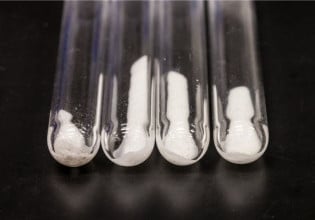On December 27, 2016, the Environmental Protection Agency (EPA) finalized its first-ever Energy Star specification for electric vehicle chargers. Electric vehicle charging infrastructure in the home and in the public sphere is increasing rapidly; the Energy Star label will help consumers, utilities, manufacturers and others integral to developing electric vehicle charging infrastructure identify more energy efficient products in this fast-growing industry.
Recently, Energy Star issued clarifications to definitions and test methods included in the EV charger specification. Clarifications to definitions included:
In requiring Energy Star certified EVSE to be NRTL listed for safety per Section 3.2.1, EPA seeks to ensure that labeled products are meeting industry safety standards. Stakeholders have noted that listing ‘Safety Functions’ as an example of a Secondary Function could be interpreted as the specification defining in which operational modes safety functions should be engaged. For clarity that EPA’s intention is to harmonize with industry safety standards, letting them specify how safety features should be implemented, EPA has removed mention of safety functions as an example under the Secondary Functions definition. EPA maintains the requirement that each EVSE be NRTL listed for safety.
EPA has removed the mention of only Tertiary Functions being engaged in No Vehicle Mode, after noting that some Secondary Functions, such as display illumination, may be engaged in No Vehicle Mode. EPA has maintained the physical description of the No Vehicle mode to differentiate it from the other defined modes.
Test method clarifications included: For test setup, ‘Receptacle or Hardwire Connection’ and SAE J1772 Vehicle Inlet Connection are to be located in relation to the measurement points, Vin, Vdiff1, Vdiff2, Iin1, Idiff1, and Iout2 shown in Figure 1b.
Power calculations for each mode should be calculated as the integral of voltage and current over one period, divided by the length of the period. This represents average power, as opposed to apparent power. Previously, the calculations consisted simply of I×V, which would be interpreted as apparent power, which was not EPA’s intention.
The Qualified Product Exchange (QPX), which is used by Certification Bodies to submit the results of testing to EPA’s database, requires the input and output power values for Operation Mode. EPA has now included these equations and expressed total power loss in terms of these constituent parts.
Section 5.5.A) Full Network Connectivity Testing: In Section 6.7.5.2 of Consumer Electronics Association (CEA) 2037-A, two methods are outlined to verify the availability of Standby-active, Low Mode, or Partial On Mode for EVSE. Since the second method is not viable for EVSE, as it would require switch S2 to remain open when the unit under test is switched into Operation Mode, EPA has clarified that Method 1 should be used to determine the availability of Full Network Connectivity.
Both Level 1 and Level 2 chargers are now eligible for the Energy Star label. Level 1 charging equipment can be plugged into a standard household outlet. Level 2 equipment uses 240V, similar to large household appliances like laundry machines, and can charge the car up to two to three times faster than a Level 1 charger.
The Energy Star requirements include power consumption limits for No Vehicle, Partial On, and Idle modes, in order to significantly reduce power consumption when the product is in use but not actively charging the vehicle. EPA also set basic criteria to highlight on the Energy Star product finder products capable of supporting demand response; this “connected†functionality allows products to reduce their electricity usage during peak periods and shift charging to non-peak times.
“EPA is excited to help the growing electric vehicle community reduce unnecessary energy waste by highlighting more efficient chargers and to recognize leading manufacturers designing their products with the latest efficient technologies,†said Ann Bailey, Branch Chief of the Energy Star Products Program.
Under these Energy Star efficiency requirements, savings from Energy Star certified chargers could grow to more than $17 million each year and more than 280 million pounds of annual greenhouse gas emissions could be prevented, equivalent to the emissions from more than 26,000 vehicles.






